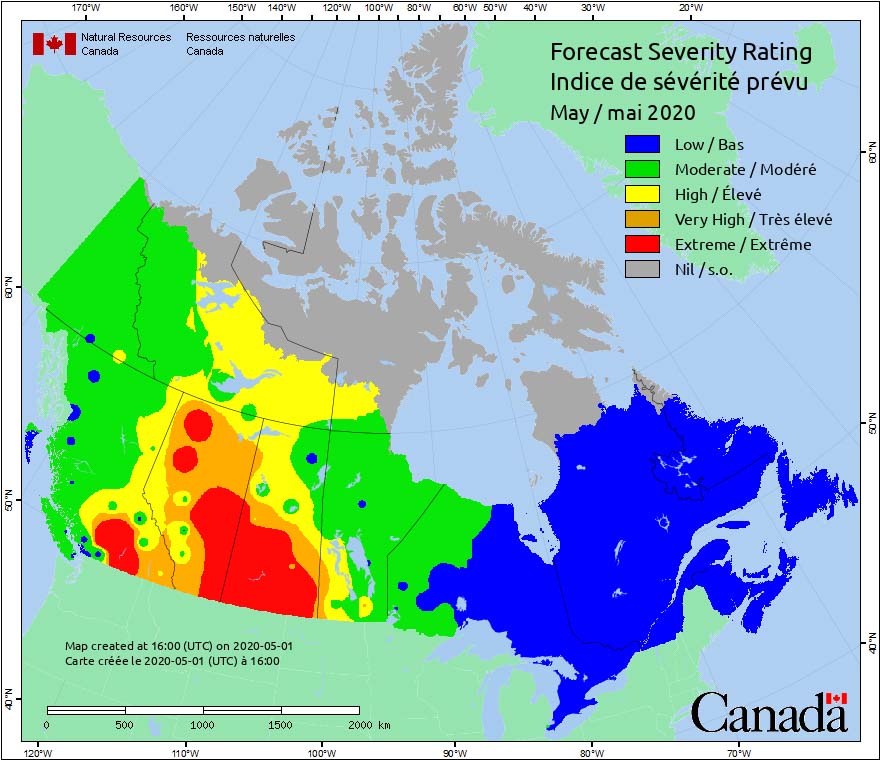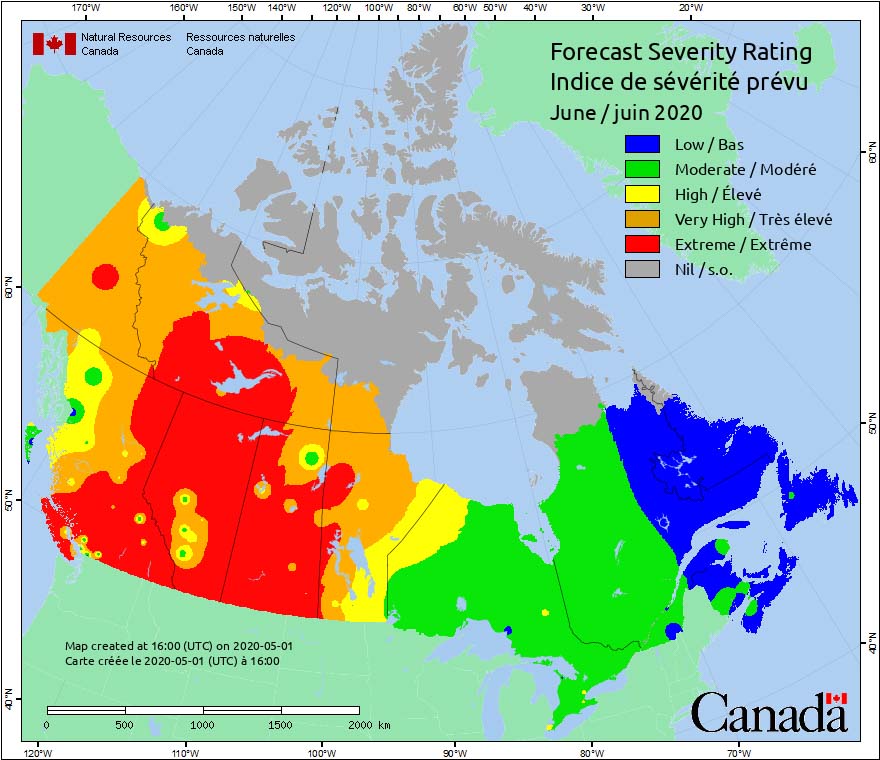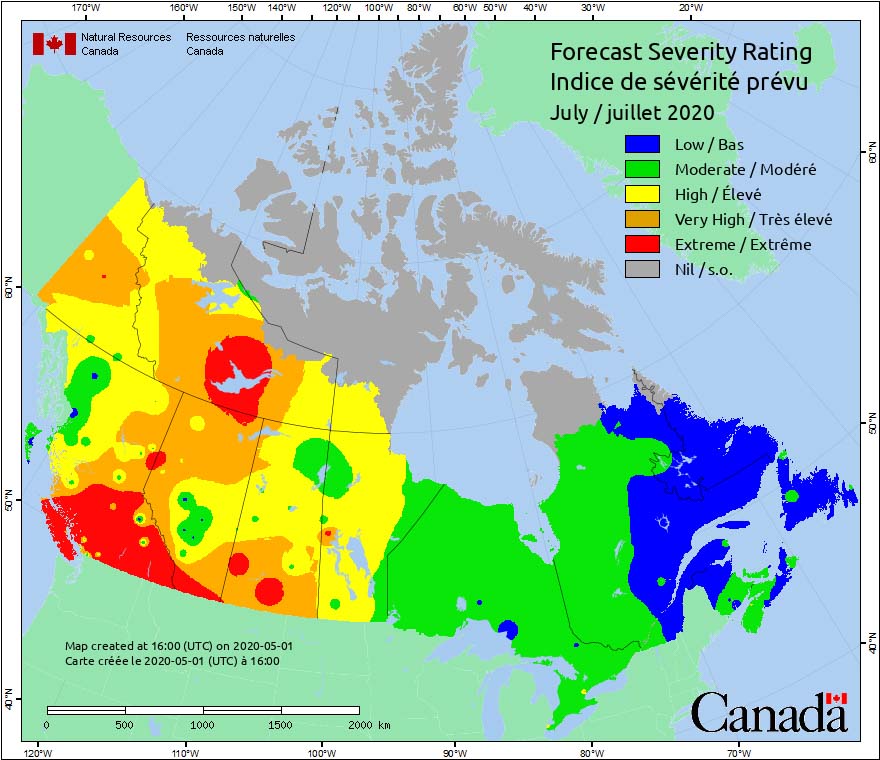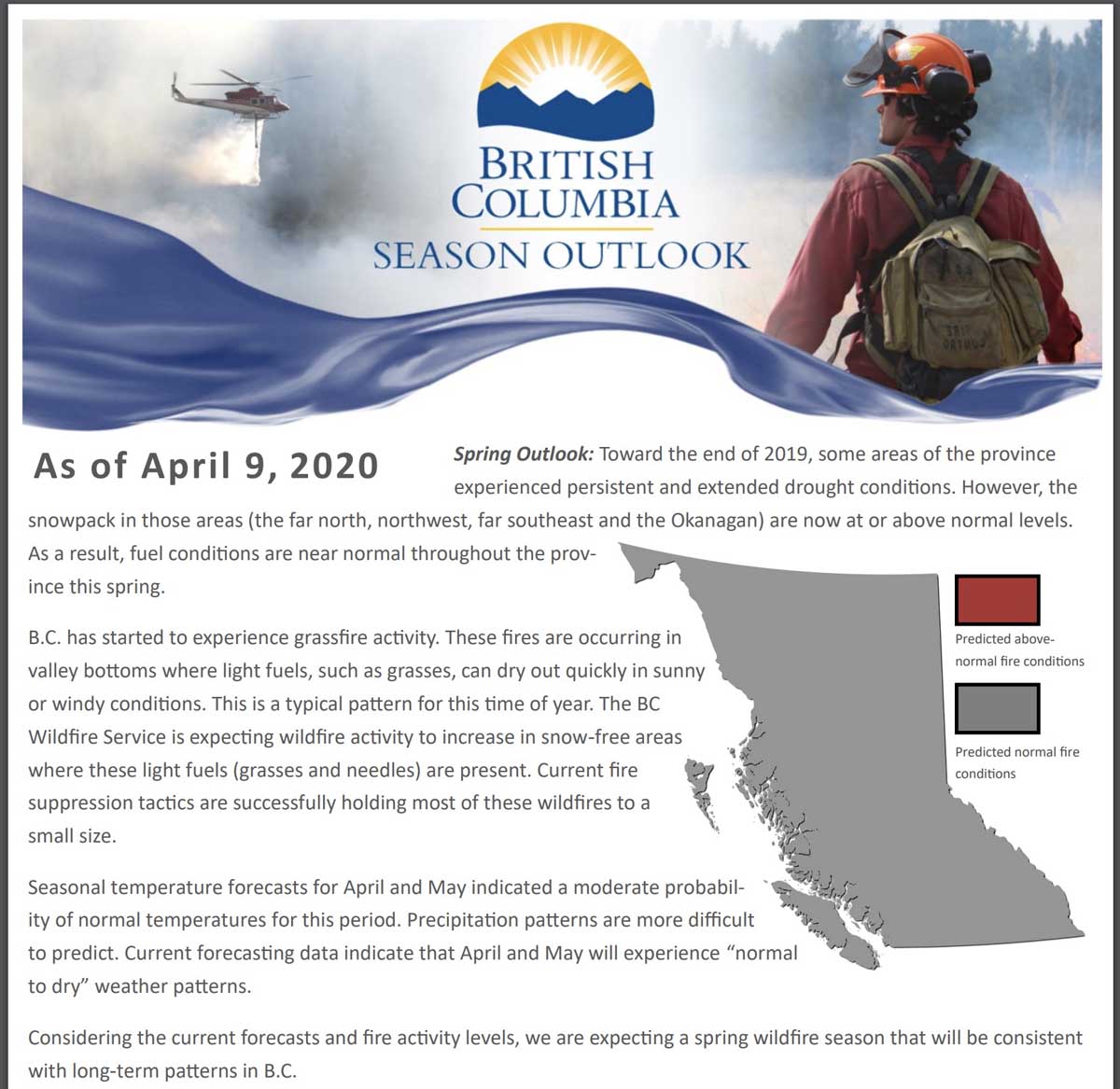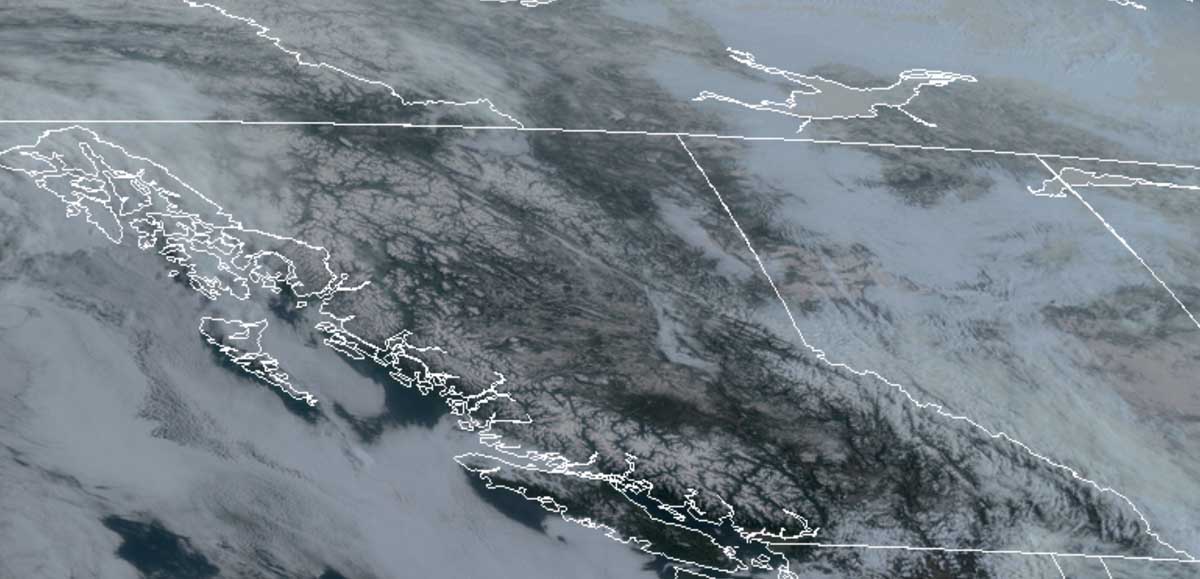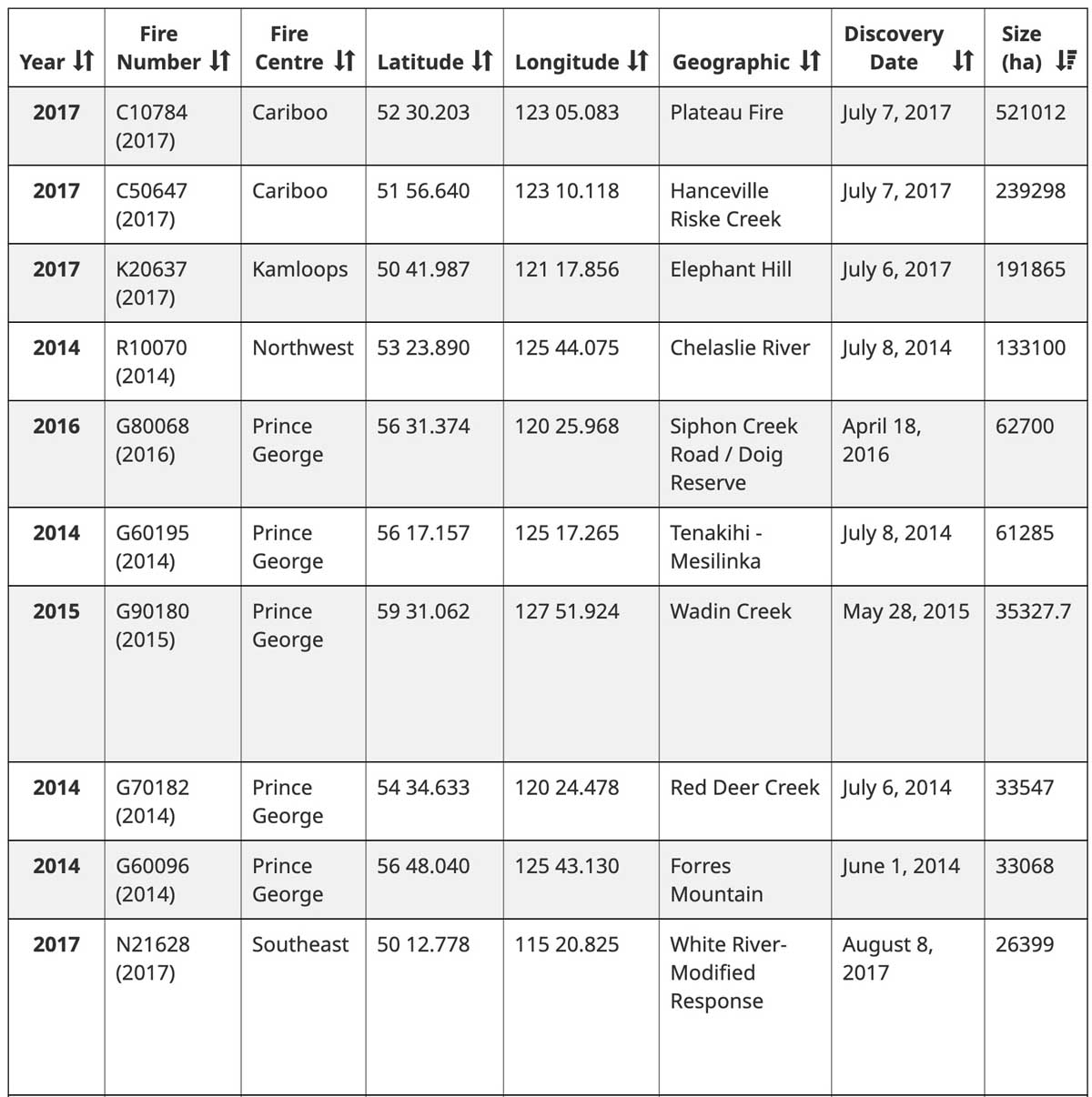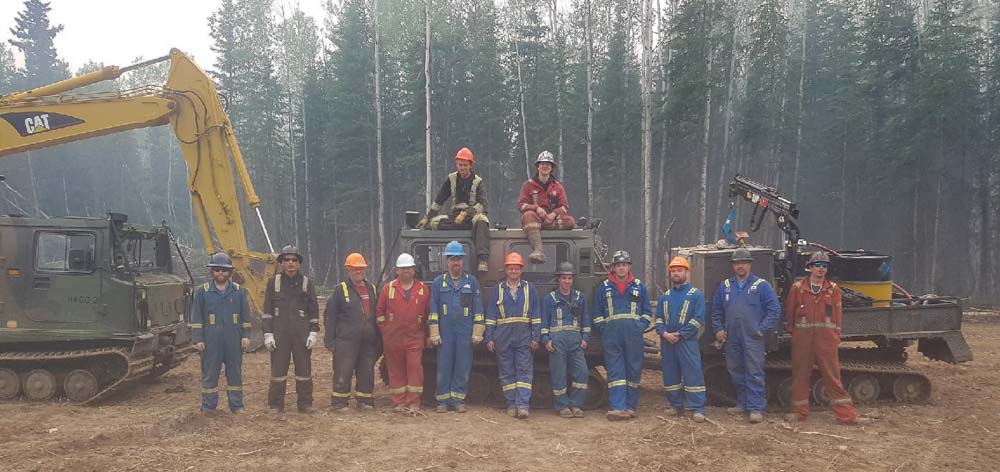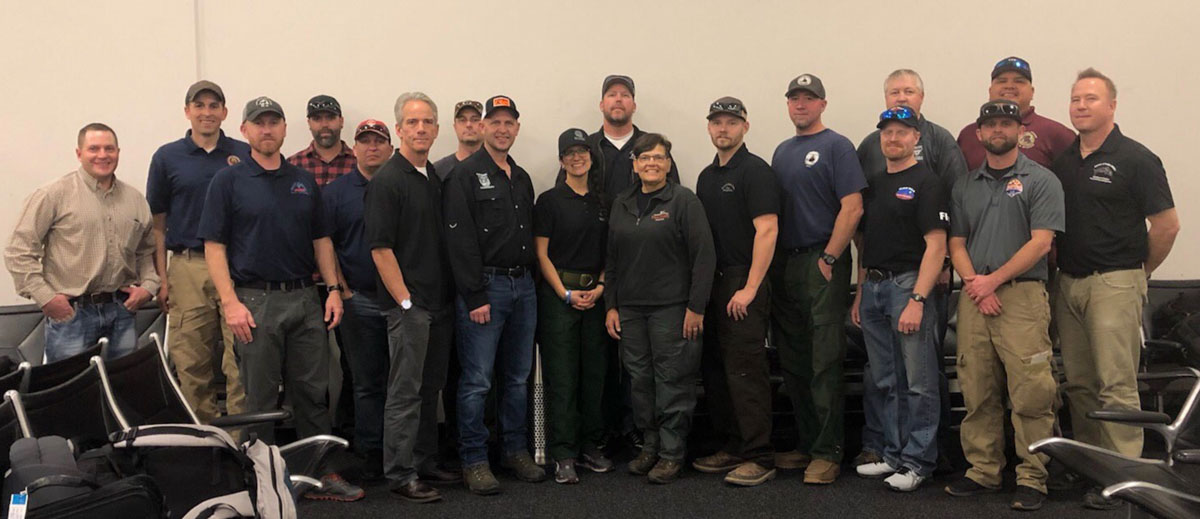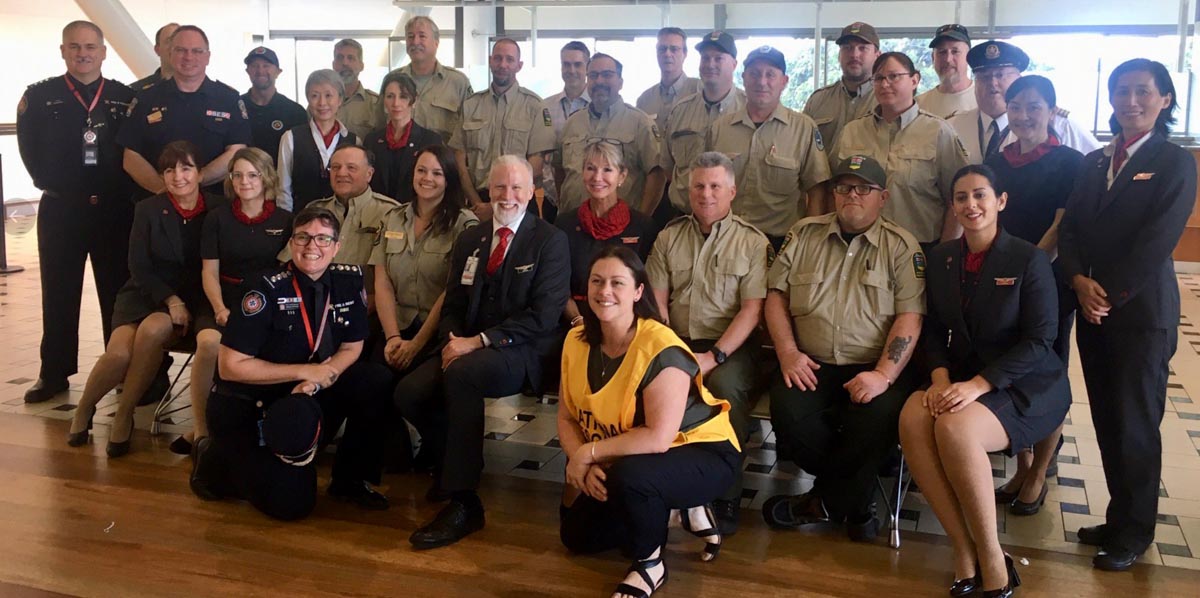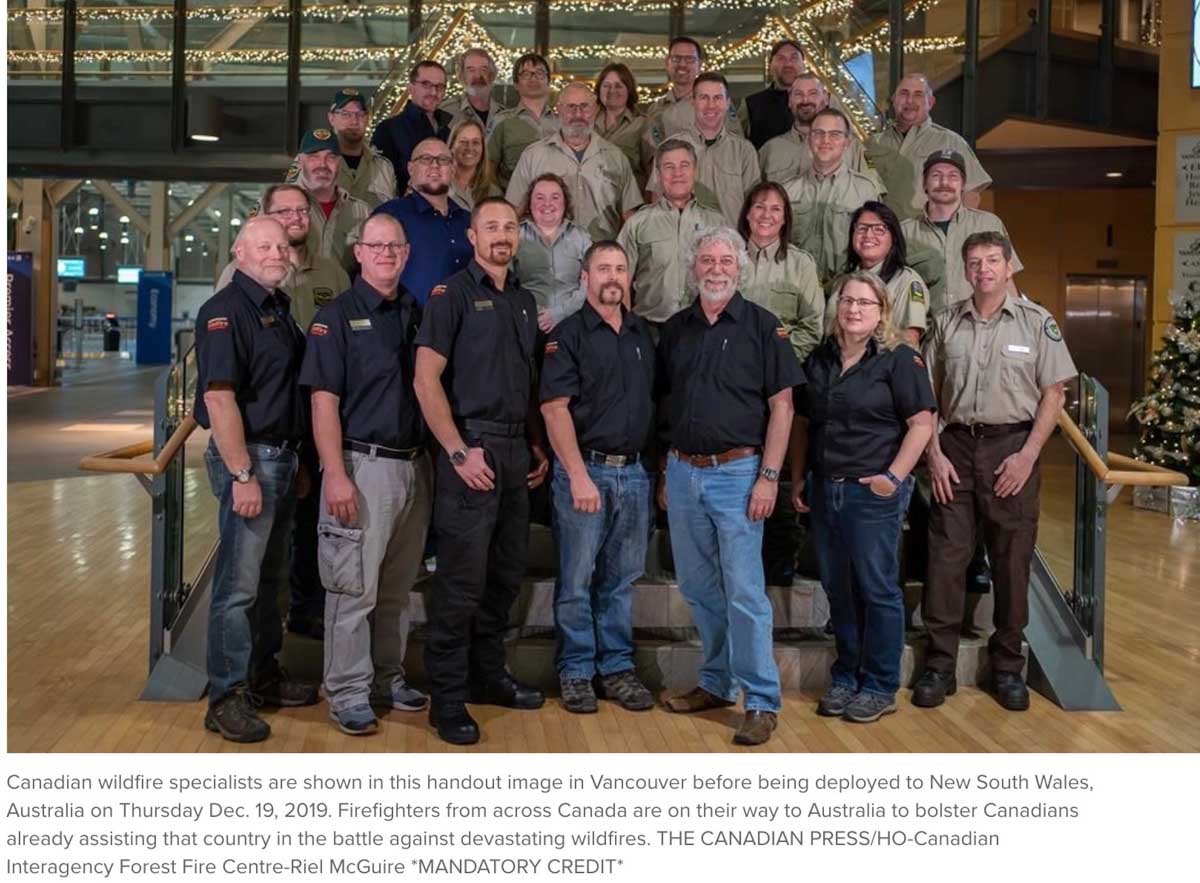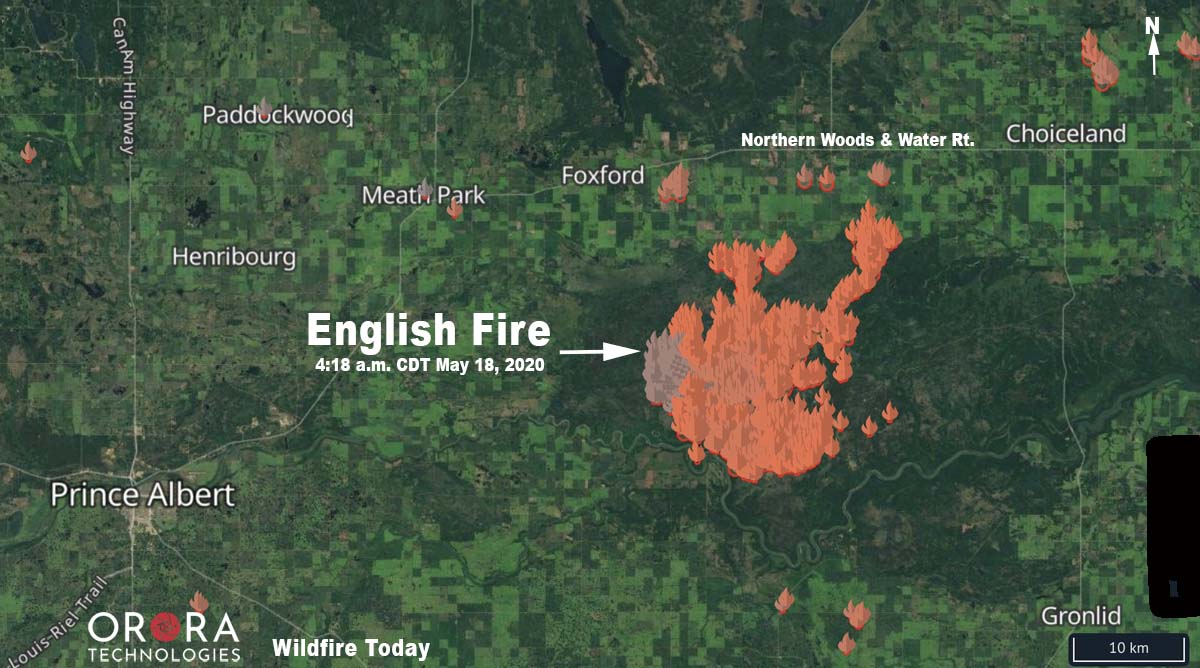
A wildfire named “English” by the Saskatchewan Ministry of Environment has burned over 71,000 acres (28,800 hectares) 30 miles (47 km) east of Prince Albert, Saskatchewan. GPS perimeter data was collected by the agency on May 16. The fire has been burning since May 8.
From Global News at 12:42 p.m. May 18, 2020:
The Saskatchewan government issued two wildfire alerts for communities northeast of Prince Albert on Sunday.
The alerts apply to the RM of Garden River the RM of Torch River specifically.
According to the government website the advisories were issued because of “wildfire[s] that [have] serious potential to cause emergency situations for the public.”
It said fires are burning in Fort a la Corne Forest and along the southwest edge of the Torch River area.Residents in both rural municipalities are asked to “prepare and be ready to take action should an evacuation be required.”
The advisories say residents in Meath Park, Weirdale, Smeaton, Snowden and Shipman should close doors, windows and vents.

